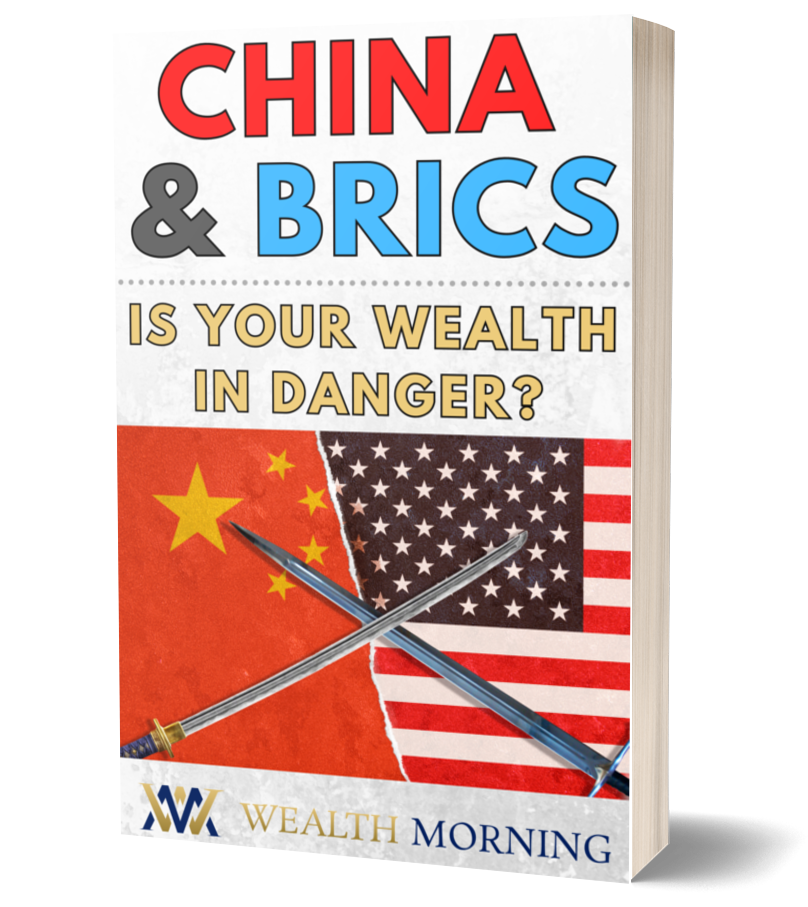Many traders struggle to change their minds.
They do all the research, they study the charts, and they form a view.
But what happens when that view is wrong?
The biggest problem for many everyday traders is their exit plan. Rather than selling when a trade isn’t working, they doggedly hold their shares in the hope their view could still be right.
All too often though, it’s not.
The ability to change your mind is critical for a trader. Your willingness to accept a mistake could make the difference between a small loss and a wipeout.
I know…I’ve been there myself.
The story I have for you is about this very situation.
My defining moment as a trader
I’m going to tell you about a defining moment in my career. It involves a trade that would have a lasting influence…a trade that gave me confidence that I’d make it as a trader.
Let me set the scene…
The year was 1999, and I was now a senior trader at Bankers Trust. This was my dream job. I could trade just about any financial market — currencies, bonds, stock indices, and precious metals.
There was just one rule: make the bank money.
Now, the story I’m going to tell you is about two trades in the precious metals market. It was a time when sentiment towards gold was near an all-time low.
You see, the yellow metal had been in a crushing bear market for three years. The price had sunk to US$275 per ounce — its lowest level since the 1970s.
This was a time when gold producers were selling gold they were yet to mine. Central bank selling was also weighing on the market (the Reserve Bank of Australia was a seller).
Needless to say, the outlook for gold was awful…just about everyone was bearish.
Now, extreme negativity is an interesting thing. There comes a point when the bears have nothing left to sell. And this can lead to some of the best buying opportunities.
The key to profiting from these situations is patience…it’s about waiting for prices to start turning higher. Only then will I consider buying. Pre-empting a reversal often proves costly.
So I waited…and waited some more.
Gold finally began to grind higher during April. It was a promising sign, but I still wasn’t ready to pull the trigger. I wanted to see prices gain some momentum.
Then in early May, there was a surge. Prices shot to a six-week high in overnight trade.
This was the confirmation I was patiently waiting for.
I got a call from the night desk in the early hours of the morning.
The voice said ‘Jason, you’re filled on your gold order.’
The exact size of my position is blurred by time. Although, I remember thinking that I’d bought more gold than some producers mine in a year. Quite simply, I was long on a lot of gold! [openx slug=inpost]
But my timing wasn’t good. Within hours a shock announcement came out of London. The Bank of England was planning to sell a huge chunk of its gold reserves.
Prices plummeted in an instant. My trade was going to hell in a handbasket, FAST!
One of the first rules of trading is to always have an exit point — a stop-loss.
Now, my stop-loss was live when the announcement was made. The problem was the price instantly gapped lower — there were no buyers to fill my sell order. Gold was in freefall.
Eventually, some buying emerged, but it was at a much lower level. The fill price for my stop-loss was ugly. I lost more than three times what I was expecting. It was a total disaster.
What happened next was my defining moment as a trader.
Gold had now broken below key support and was trending lower.
My trading rules were clear: Go short if prices break to the downside. There was no time to re-consider the rules. I reversed my position without hesitation.
(Going short means to sell something you don’t own. The aim is to buy it back at a lower price.)
For weeks I had been waiting to buy — my view was that gold would trade higher.
But within a few minutes, I had sold two large parcels of gold…
The first sale was an exit of my long position…the second was a new trade that would profit if gold fell further. This was the exact opposite of what I was expecting.
Over the next two months gold fell hard, and I held on for the ride.
Staying with the trend is a key part of my trading strategy. It’s the single most important rule for maximising profits…and this time was no different.
I finally closed my position after about seven weeks. It was just days before gold made a final bear market low of US$252.80. My second trade made back the initial loss many times over.
Why was this a defining moment?
So why was this trade a defining moment?
Well, I was able to hold my nerve and make good decisions. This gave me confidence that I’d go the distance as a trader. I knew this was the career for me.
But it’s what made this possible that really matters…
You see, having a set of proven trading rules was the key. This is how I was able to quickly make good choices under pressure. It was my plan for buying and selling that won the day.
Following a set of rules wasn’t new to me — I’d been trading this way for a while.
But what made this situation different was the speed in which it was unfolding. There was no time to think. It was a case of following the rules without freezing up.
Here’s the thing: you create your trading plan while in a calm, level-headed state. You then rely on your plan’s rules when clear thinking is all but impossible.
The trader with the right trading formula always knows what to do. This is a big advantage…they can be decisive and take opportunities many people would miss.
This experience gave me an unwavering confidence in systemised trading. I knew that consistently following a well thought out set of rules was the key to long-term success.
I now fully understood why so many traders fail. It all comes down to preparation. The rules-based trader has a plan for everything, while many traders have a plan for nothing.
My trading formula gave me a real edge. It was my blueprint to making a lot of money.
Regards,
Jason McIntosh





Jason McIntosh is a professional quantitative analyst. Before he graduated in 1991 he joined Bankers Trust — a Wall Street investment bank — to be a trader. After Bankers Trust was taken over in 1999, Jason, already financially independent, co-founded a stock market advisory and funds management business called Fat Prophets. At 37 he sold his part of that business and retired. These days, he’s a private trader and system developer. In 2014 he launched the wildly successful trading service: Quant Trader.